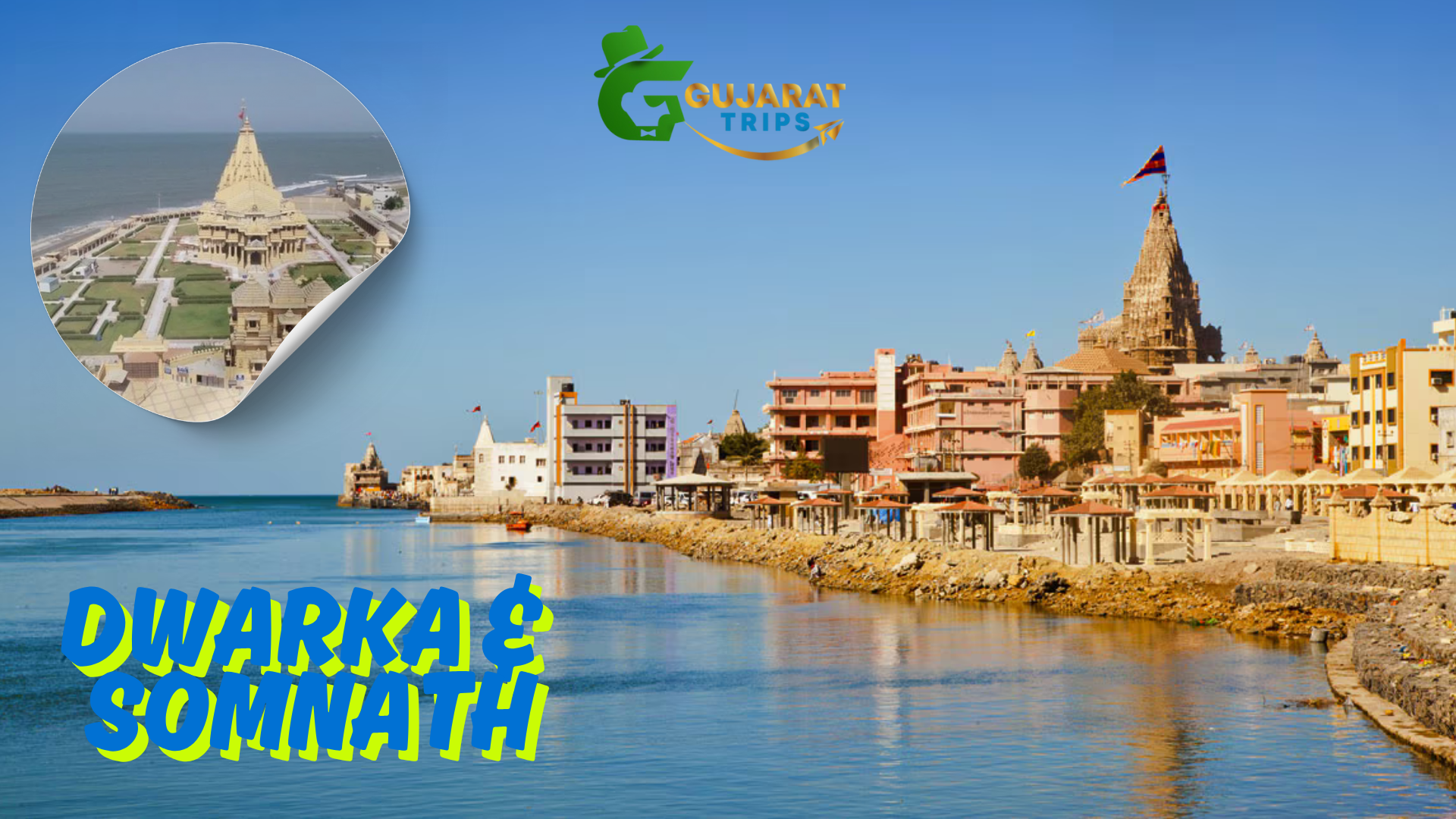Planning a trip to Dwarka and Somnath? These sacred destinations in Gujarat, India, are steeped in mythology and spirituality, offering a blend of divine temples, serene beaches, and vibrant culture. Choosing the right season can make your visit unforgettable. In this guide, we explore the best time to visit Dwarka and Somnath, highlighting the ideal weather, key attractions, and travel tips for a seamless experience.
Why Visit Dwarka and Somnath?
Dwarka, known as the ancient kingdom of Lord Krishna, is home to the majestic Dwarkadhish Temple, a key Char Dham pilgrimage site. Somnath, revered for its Somnath Temple, one of the twelve Jyotirlingas, attracts devotees and history enthusiasts alike. Beyond spirituality, both destinations offer scenic beaches, historical sites, and a glimpse into Gujarat’s rich heritage. Whether you’re seeking divine blessings or cultural exploration, timing your visit is crucial for comfort and enjoyment.
Best Season to Visit Dwarka and Somnath
Winter (October to February): The Ideal Time
Winter is undoubtedly the best time to visit Dwarka and Somnath. From October to February, the weather is pleasant, with temperatures ranging from 10°C to 25°C. This makes it perfect for exploring temples, strolling along beaches, and enjoying outdoor activities without the discomfort of heat or rain.
- Why Winter?
- Comfortable Weather: Cool days and mild evenings ensure a pleasant experience at sites like the Dwarkadhish Temple and Somnath Temple.
- Festivals and Events: Winter coincides with major festivals like Diwali (October/November) and Makar Sankranti (January), when temples are adorned, and cultural celebrations add vibrancy. The Somnath Temple’s evening aarti during this season is a mesmerizing experience.
- Clear Skies: Perfect for photography and exploring attractions like Dwarka’s Nageshwar Jyotirlinga or Somnath’s Bhalka Tirth.
Tip: Book accommodations in advance, as winter is peak tourist season, especially during festivals.
Monsoon (June to September): A Serene Alternative
The monsoon season brings moderate to heavy rainfall to Dwarka and Somnath, with high humidity levels. While the lush greenery and fewer crowds create a peaceful ambiance, outdoor activities may be limited due to wet conditions.
- Pros:
- Temples like Dwarkadhish and Somnath remain accessible for devotees.
- Budget-friendly travel with lower hotel rates and fewer tourists.
- Cons:
- Rain can disrupt beach visits and sightseeing at places like Dwarka’s Gomti Ghat or Somnath’s Prabhas Patan.
- Coastal areas may experience flooding, affecting travel plans.
Tip: Carry umbrellas, waterproof clothing, and non-slip footwear if visiting during the monsoon.
Summer (March to May): For Budget Travelers
Summers in Dwarka and Somnath are hot, with temperatures soaring between 35°C and 42°C. The intense heat can make temple visits and outdoor exploration tiring, especially during the day.
- Pros:
- Fewer crowds, allowing a more relaxed visit to spiritual sites.
- Discounts on accommodations and travel packages.
- Cons:
- High temperatures may limit outdoor activities, such as exploring Dwarka’s underwater ruins or Somnath’s Triveni Sangam.
- Midday heat can be exhausting for elderly travelers or families.
Tip: If visiting in summer, plan temple visits early in the morning or late afternoon to avoid peak heat.
Top Attractions in Dwarka and Somnath
Dwarka Highlights
- Dwarkadhish Temple: Dedicated to Lord Krishna, this 5-story temple is a must-visit for its intricate architecture and spiritual aura.
- Nageshwar Jyotirlinga: One of the twelve Jyotirlingas, believed to protect from evil forces.
- Gomti Ghat: A serene spot for evening walks and boat rides, offering views of the Arabian Sea.
- Bet Dwarka: An island accessible by ferry, associated with Lord Krishna’s life and ancient ruins.
Somnath Highlights
- Somnath Temple: A sacred Jyotirlinga shrine with stunning sea views and a captivating evening aarti.
- Bhalka Tirth: The site where Lord Krishna is believed to have left his mortal body.
- Triveni Sangam: The confluence of three rivers, a sacred spot for rituals and reflection.
- Somnath Beach: Ideal for a relaxing stroll, especially during winter’s pleasant weather.
Cultural and Spiritual Experiences
Visiting Dwarka and Somnath during winter allows you to immerse in Gujarat’s vibrant culture. Participate in temple rituals, attend the Somnath Mahadev Fair (November), or witness the colorful celebrations of Makar Sankranti. The evening aarti at both temples is a soul-stirring experience, enhanced by the cool winter ambiance. For history buffs, Dwarka’s underwater archaeological sites and Somnath’s historical significance offer a deep dive into India’s past.
Travel Tips for Dwarka and Somnath
- Clothing: Pack light cotton clothes for winter, with a light jacket for cooler evenings. Modest attire is recommended for temple visits.
- Crowd Management: Winter attracts more visitors, so arrive early at temples to avoid long queues.
- Local Cuisine: Savor Gujarati delicacies like dhokla, thepla, and khichdi at local eateries.
- Connectivity: Dwarka and Somnath are well-connected by road and rail. The nearest airports are in Jamnagar (for Dwarka) and Diu (for Somnath).
- Respect Local Customs: Follow temple guidelines, such as removing footwear and maintaining silence during prayers.
Why Winter is the Best Choice
Winter (October to February) stands out as the ideal season for visiting Dwarka and Somnath due to its pleasant weather, festive atmosphere, and accessibility to attractions. Whether you’re a pilgrim seeking divine blessings or a traveler exploring Gujarat’s heritage, this season ensures a comfortable and enriching experience. Plan your trip during this time to witness the spiritual grandeur of Dwarka’s Dwarkadhish Temple and Somnath’s sacred shores in their full glory.
Ready to embark on a soulful journey? Dwarka and Somnath await with open arms, offering a perfect blend of spirituality, history, and natural beauty.


